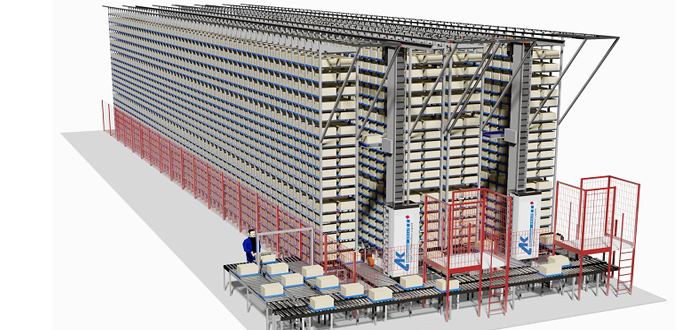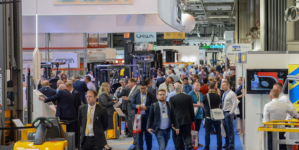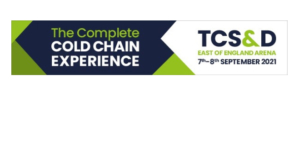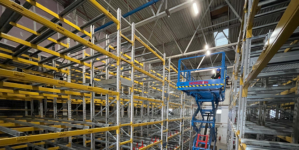-
ROSSLARE EUROPORT TARGETS HEALTH & SAFETY WITH CAMERA TELEMATICS PARTNERSHIP - 2 days ago
-
Landmark Study Reveals Wearable Robotics Significantly Boost Safety and Efficiency in Industrial Environments - July 24, 2024
-
Visku Tackle The Retail Seasonality Challenge One Pallet At A Time - July 22, 2024
-
KAMMAC AND BERGEN LOGISTICS STRENGTHEN FASHION & LIFESTYLE SERVICES IN THE UK - July 19, 2024
-
TENTBOX EXTENDS PARTNERSHIP WITH ARROWXL TO SUPPORT INCREASING DEMAND - July 17, 2024
-
The Perfume Shop improves customer journeys while driving profitability in partnership with Scurri - July 17, 2024
-
ZEROMISSION SECURES £2.3M ($3M) INVESTMENT TO ACCELERATE ELECTRIC FLEETS - July 16, 2024
-
BCMPA CELEBRATES SUCCESS OF 2024 CONFERENCE - July 15, 2024
-
Best of the Best: Jungheinrich Celebrates Triple International Award Win - July 12, 2024
-
GOPLASTICPALLETS.COM CALLS ON NEW CHANCELLOR RACHEL REEVES TO CONSIDER PLASTIC PACKAGING TAX REFORM - July 10, 2024
Raising efficiency at a Minimum Loss of Cooling.
Frischdienst Walther builds with Klinkhammer a cold store down to -22°C
The Klinkhammer Group has built an automated deep freeze warehouse for
temperatures down to -22°C for the company Frischdienst Walther, a food delivery wholesaler
located in Kitzingen, supplying restaurants, hotels and large-scale consumers. Thanks to
the tray technology used, it is now possible to store a wide variety of different package sizes
in a cost-effective manner. The focus is on short distances, a minimum cooling loss and significant
increase of efficiency in the warehouse through automation.
Restaurants and large-scale consumers rely on the competence of Frischdienst Walther who supplies
more than 7,800 articles for the preparation of menus. More than 100 years of successas family owned
company –this is only possible with the respective dedicationand passion for what you are
doing. Following the motto: “Being your expert in frozen food who speaks your language and ensures
that you bring the quality to the table which your guests expect from you” the company Frischdienst
Walther guarantees highest reliability during order picking of the goods ordered thanks to the
technical support provided by the “Pick-by-Voice” technology. By means of the electronic routing
and scheduling system and thanks to the own vehicle fleet equipped with two-chamber cooling systems,
delivery deadlines and cold chains are fully complied with.
Tray technology ensures flexibility for package sizes
Given the rapidly growing need for deep-freeze products, Frischdienst Walther decided to automate
its processes in the deep-freeze warehouse by contracting Klinkhammer. “Our aim was to considerably
increase the capacity, speed, efficiency and flexibility while at the same time making optimum
use of space” outlines Friedrich Walther, Managing Director of Frischdienst Walther. “The orders of
our customers from restaurants are often placed at very short notice and more than 95% of them are
delivered within 24 hours.” For the just-in-time delivery to its customers Frischdienst Walther may
now benefit from a modern, automated high-bay warehouse featuring two aisles, providing 9,120
tray storage locations. The throughput amounts to up to 150 storage and retrieval actions per hour.
The specialists of Klinkhammer use trays as loading/storage aids as these trays offer highest possible
flexibility during the storage process of packaging units of different size and height.
Energy efficiency and a minimum loss of cooling in the deep-freeze warehouse
The order picking workstations, which are connected by means of a conveyor loop in the pre-zone of
the automated deep-freeze warehouse, guarantee an ergonomic handling of the trays. The maximum
height of the small parts warehouse totals to 7.60 m to fully comply with the statutory fire protection
requirements. Thanks to this height limitation it was possible to avoid the installation of complex
and costly sprinkler systems or the inertisation of the warehouse. All warehouse sections and
functional areas are linked such to ensure shortest possible distances and such that the loss of cooling
as well as the introduction of heat and humidity is kept at a minimum level. The machines and
systems have been designed to best fit the requirements in deep-freeze stores. Deep-freeze suitable
technical components such as special drives, control cabinet heaters, appropriate photoelectric
barriers and sensors as well as temperature-resistant plastics guarantee high system reliability even
at temperatures of minus 22°C. To ensure high energy efficiency, the power requirements of the
system were harmonized with the power requirements of the air conditioning to compensate power
peaks in current consumption.
Linking the Klinkhammer Warehouse Management Software to the ERP system
The Klinkhammer Warehouse Management System, including the material flow computer, is linked
to the already existing ERP system via interfaces. Beyond the incoming goods and order picking
process, the warehouse management system also controls the flow of materials and the storage and
retrieval actions of the products which are allocated to a storage location depending on the product
group, best-before date and batch number. The Klinkhammer material flow computer is responsible
for the transport of the trays and the management of the storage locations. The warehouse management
system is in charge of managing the respective stocks on the trays whereas quantity
changes are controlled by the higher-level host system. To get a better overview of the storage locations
available, the warehouse management system displays the availability based on height classes.
Special sequencing algorithms allow strict adherence to the order and position sequence taking
into account batches and best-before dates. For identifying the goods to be stored in the warehouse,
the trays are labeled/marked with unique, machine-readable bar codes at two positions.
Saving time thanks to automated receipt
Following notification, the user places the frozen products on an empty tray for automatic receipt.
While this tray is identified and weighed at the conveyor system scanner, the weight determined by
the scales is compared to the calculated weight of the quantity received. If the weight is within the
tolerance range, the tray is automatically stored in the deep-freeze warehouse. Product-specific
units with different individual weight, as this is the case, for example, for a leg of venison, can be
represented in the warehouse management system by entering the weight manually. After that, the
ERP system receives a feedback reporting on the sum per position including time stamp. Thanks to
automating the warehouse, it was possible to achieve a significant efficiency increase when handling
different package sizes and weights.

































